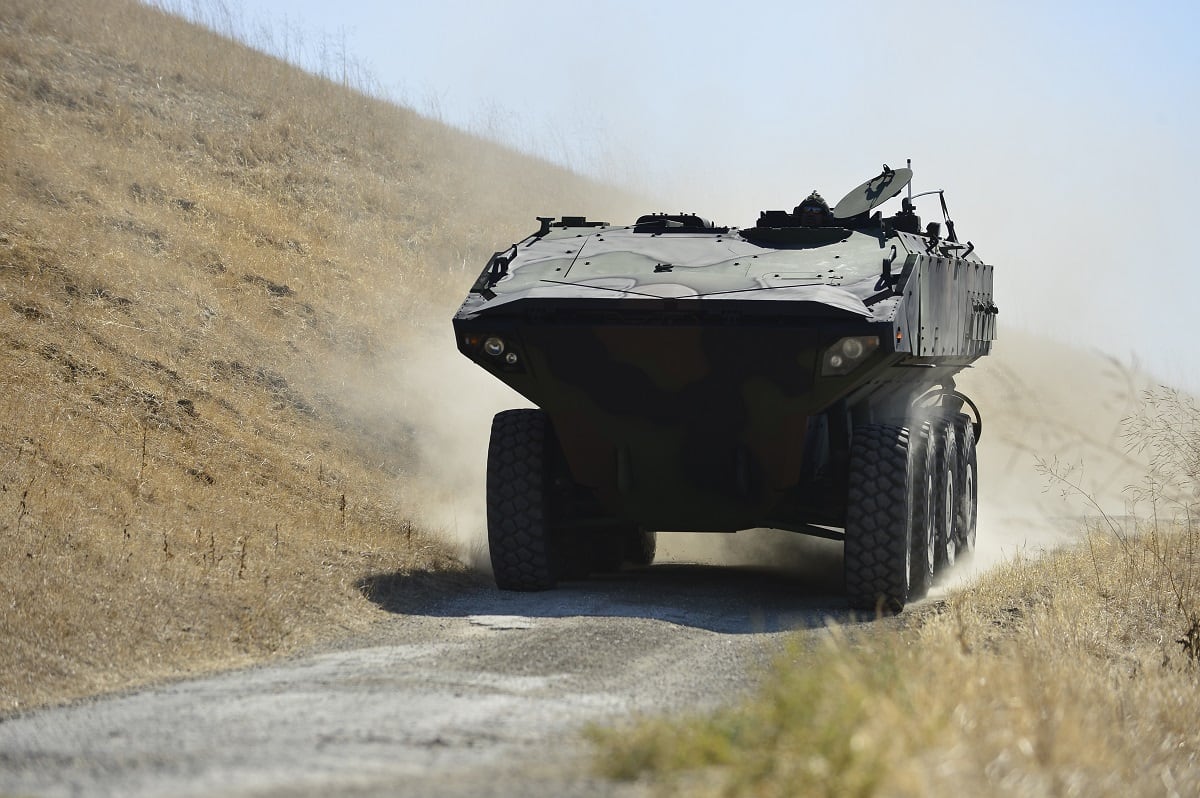NATIONAL HARBOR, Md. — The Marine Corps is nearing a decision on whether BAE Systems or SAIC will build its new Amphibious Combat Vehicle, having just wrapped up operational tests of prototypes a week ago.
The Marine Corps is still on track to make an award for low-rate initial production to one of the companies in the June time frame.
All government testing of the prototypes concluded the first week of December and the Marine Corps issued its request for proposals the first week in January. Operational tests also began concurrently, John Swift, BAE Systems’ ACV program manager, told Defense News in an interview just ahead of Navy League’s Sea-Air-Space conference.
Government testing included land reliability testing, survivability and blast testing and water testing — both ship launch and recovery as well as surf transit.
[BAE Systems completes Amphibious Combat Vehicle shipboard testing]
Operational evaluations included seven prototypes each from both SAIC and BAE Systems, six participated and one spare was kept for backup.
The first month of operational testing took place at Twentynine Palms Base in California, where Marines ran through a variety of tactical missions with the vehicles. And the following month, the vehicles went to Marine Corps Base Camp Pendleton, California, where it performed littoral penetrations, surf operations and a portion on land, according to Swift.
Over the course of the two-month time period — or roughly 10 weeks — the vehicles accrued almost 4,000 miles and over 1,500 mission hours, “which is unbelievable,” Swift said.
The operational tests validated “the robustness of our design,” Swift said, pointing back to the mileage and hours logged, adding, “that is phenomenal.”
BAE Systems’ partnered with Italian company Iveco Defense Vehicles to build its ACV offering.
The Marine Corps awarded both BAE and SAIC roughly $100 million each in December 2015 to build 16 prototypes for the service to test.
The Marines plan to field 204 of the vehicles by 2020. The total value of the contract with all options exercised is expected to amount to about $1.2 billion.
Some of the features BAE believes are particularly attractive for a new ACV is that it has space for 13 embarked Marines and a crew of three, which keeps the rifle squad together. The engine’s strength is 690 horsepower over the old engine’s 560 horsepower, and it runs extremely quietly. The vehicle has a V-shaped hull to protect against underbody blasts, and the seat structure is completely suspended.
SAIC’s vehicle, which is being built in Charleston, South Carolina, offers improved traction through a central tire-inflation system to automatically increase or decrease tire pressure. It also has a V-hull certified during tests at the Nevada Automotive Test Center — where all prototypes will be tested by the Marine Corps — and has blast-mitigating seats to protect occupants.
SAIC declined request for comment on the ACV competition.
Jen Judson is an award-winning journalist covering land warfare for Defense News. She has also worked for Politico and Inside Defense. She holds a Master of Science degree in journalism from Boston University and a Bachelor of Arts degree from Kenyon College.





